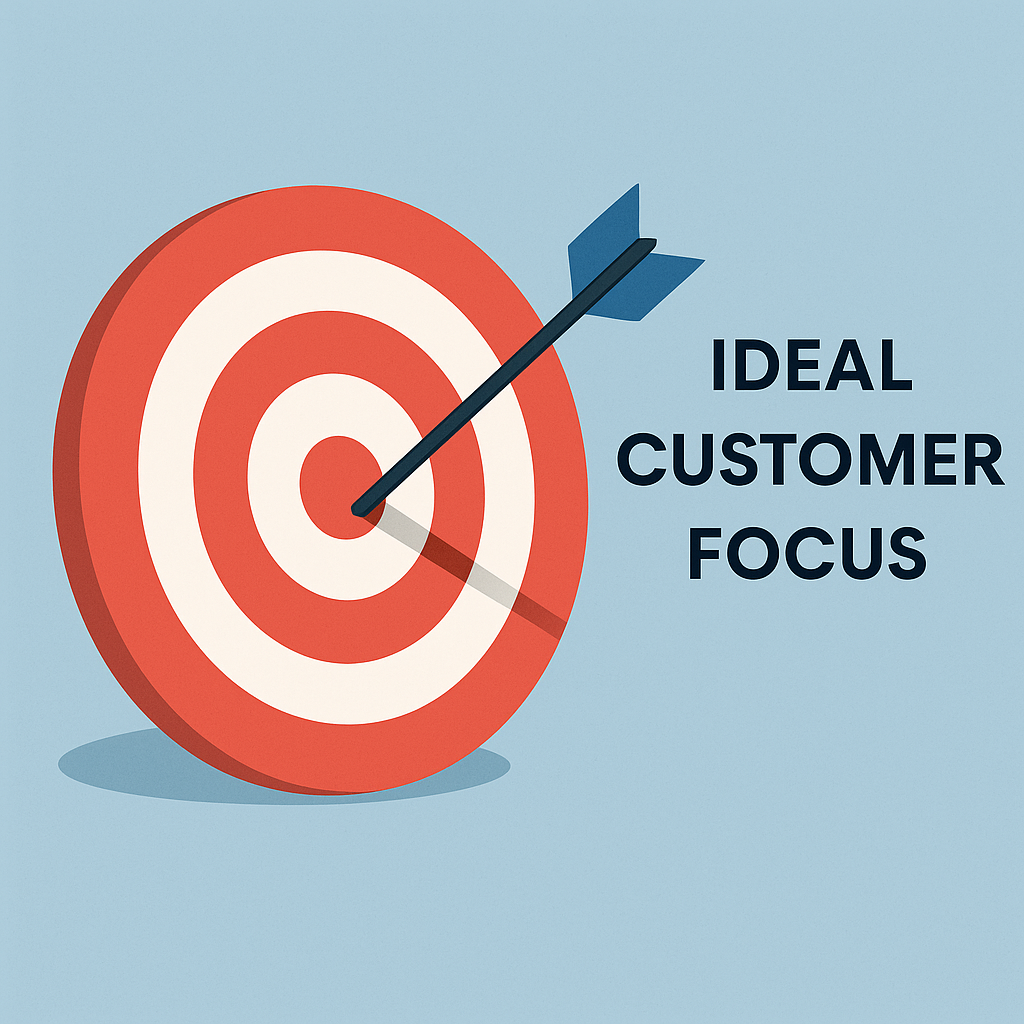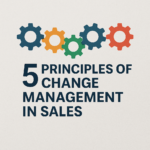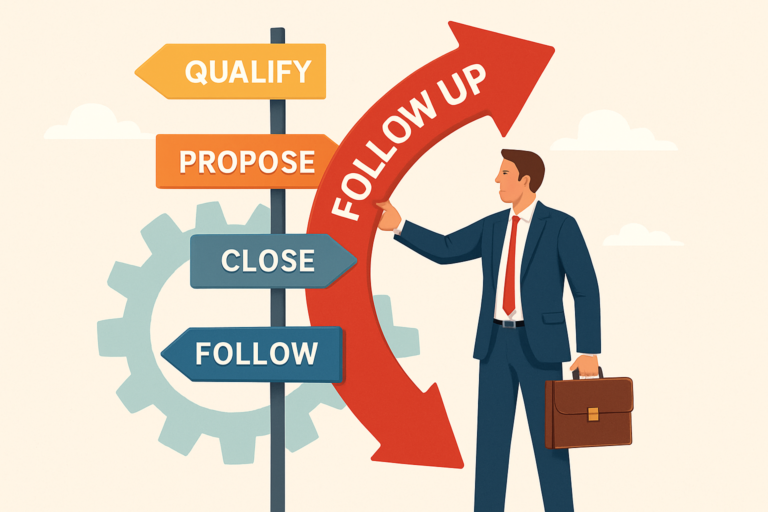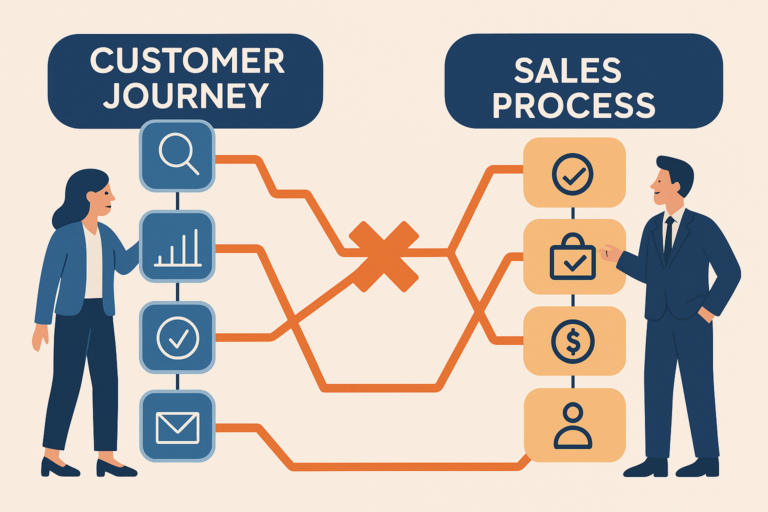Overview

Long-term growth doesn’t come from closing more deals. It comes from consistently winning the right ones, the customers who align with your strategy, value proposition, and profit goals. According to Harvard Business Review, this isn’t just a sales issue. It’s a leadership and strategy challenge.
This piece breaks down the three principles HBR outlines clear customer selection, a sharp competitive advantage, and a sales experience that reflects your brand—and shows how companies across industries bring them to life. Insights from Millennia Quest’s client work show how to turn these ideas into action and results.
Stop Selling to Everyone Who’ll Listen
Many companies fall into the “any deal is a good deal” mindset. It boosts short-term numbers but causes long-term problems lost focus, lower margins, and higher churn.
HBR points to a key leadership responsibility: make sure sales teams understand the company’s go-to-market strategy in real, usable terms. That clarity must flow from the C-suite to frontline reps, shaping how they target, pitch, and close deals.
Where Strategy and Sales Disconnect
When executives rate how well sales teams understand their go-to-market strategy, the average score is 6.4 out of 10. But ask sales teams the same question, and the number drops to 3.7.
That’s a serious gap. Every sales conversation becomes a test of how well your strategy is understood and executed.
The first fix? Define exactly who your ideal customer is and who isn’t. That includes:
- Focused industries and verticals
- Right-size organizations
- Buyers with the authority to act
- Situations where your offering creates real value
Many sales teams chase prospects who don’t have the authority, budget, or fit to justify the time spent. In industries like healthcare or enterprise tech, missing the real economic buyer can kill a deal before it starts.
Real Example: Aviation

One aviation services client was chasing deals with carriers whose needs far exceeded their capacity. We helped them define clear “go” and “no-go” criteria. They shifted their focus to carriers that fit their capabilities, improving win rates and efficiency.
Know What Makes You Better and Use It in the Right Way
Sellers need to clearly understand what sets their company apart and how that matters to their buyers. Without that clarity, teams fall back on generic pitch decks and compete on price.
Best-in-class sellers do something else: they tie their strengths directly to what their target buyers care most about.
Example from HBR:
An elevator company initially focused on how quiet its products were. But what buyers really valued was the space-saving design, which increased revenue per square foot. That shift turned the pitch into a conversation about profits, not features.
Real Example: Technology
We worked with a software firm to move beyond specs and start quantifying how they cut costs or boost ROI. That change helped justify premium pricing and reduced pressure from competitors.
The Sales Experience Is the Customer Experience
One part of the HBR framework often gets overlooked: the sales process itself. In fact, the buying experience can be responsible for 25% (or more) of the decision to buy more than branding or service, second only to the product itself.
In crowded markets, how you sell becomes a big differentiator. That means being:
- Responsive and professional
- Focused on what matters to the buyer
- Knowledgeable about their business
If the early sales experience falls short, buyers disengage fast. HBR calls this “Exit 1”, the moment prospects check out and start looking elsewhere.
What Happens When You Drift Off Strategy
When sales teams don’t have clear direction, the problems compound:
- You end up with customers who aren’t a fit
- Margins shrink due to heavy discounting
- Sales cycles drag out with unqualified leads
- Your best people waste time on the wrong prospects
A few off-strategy deals won’t hurt but when they become the norm, your competitive edge fades.
How to Put These Ideas Into Action
At Millennia Quest, we help teams operationalize HBR’s principles in ways that drive measurable performance:
- Build Ideal Client Profiles: Turn strategy into clear qualification criteria and tools reps can use.
- Sharpen Value Messaging: Link your unique strengths to what your buyers care about most.
- Integrate CX Into Sales: Make sure the way you sell matches the experience your brand promises.
- Use Feedback Loops: Analyze deals won and lost, adjust messaging, and tighten targeting.
These changes only stick when backed by consistent leadership messaging, manager coaching, and performance tracking.
Bottom Line
Winning the right customers isn’t just about selling harder. It’s about strategic focus, clear messaging, and a sales experience that stands out.
The companies that succeed:
- Know who they want to sell to and who they don’t
- Help their sellers connect value to real buyer priorities
- Treat every sales touchpoint as part of the customer experience
In complex industries like aviation, healthcare, tech, or financial services, these practices separate sustainable growth from short-term wins.
Source: Adapted from “Winning the Right Customers Isn’t Just a Sales Issue” by Scott Edinger, Harvard Business Review, May 2025.





